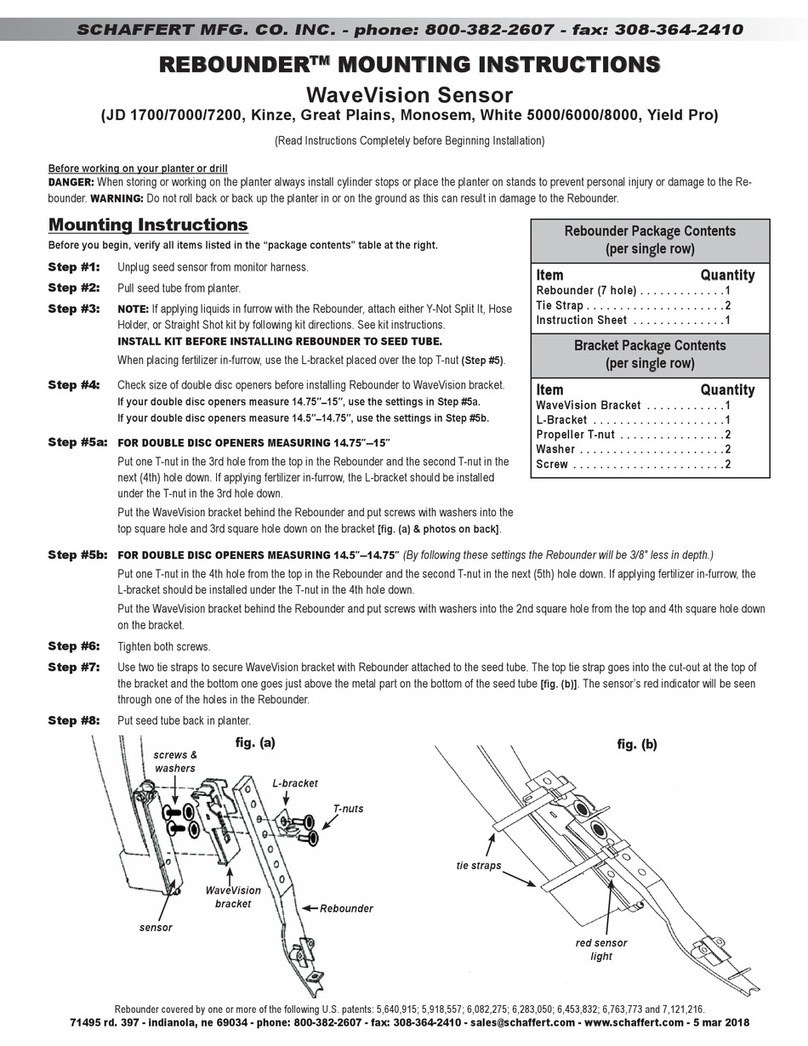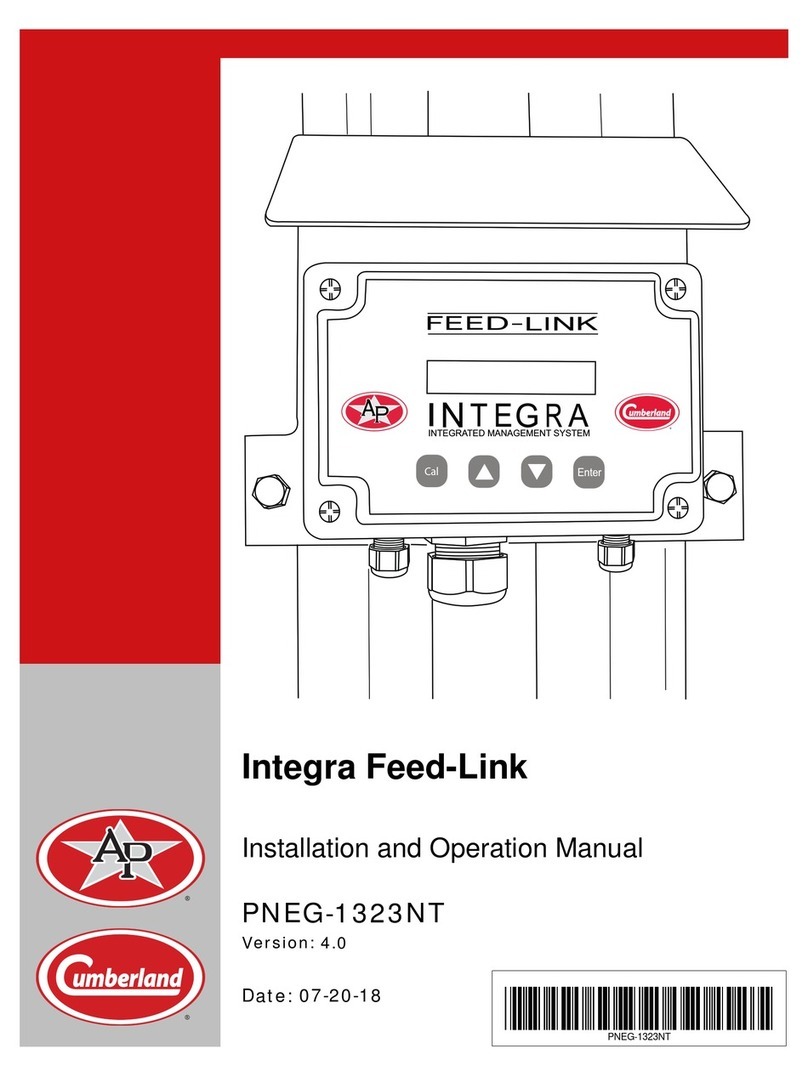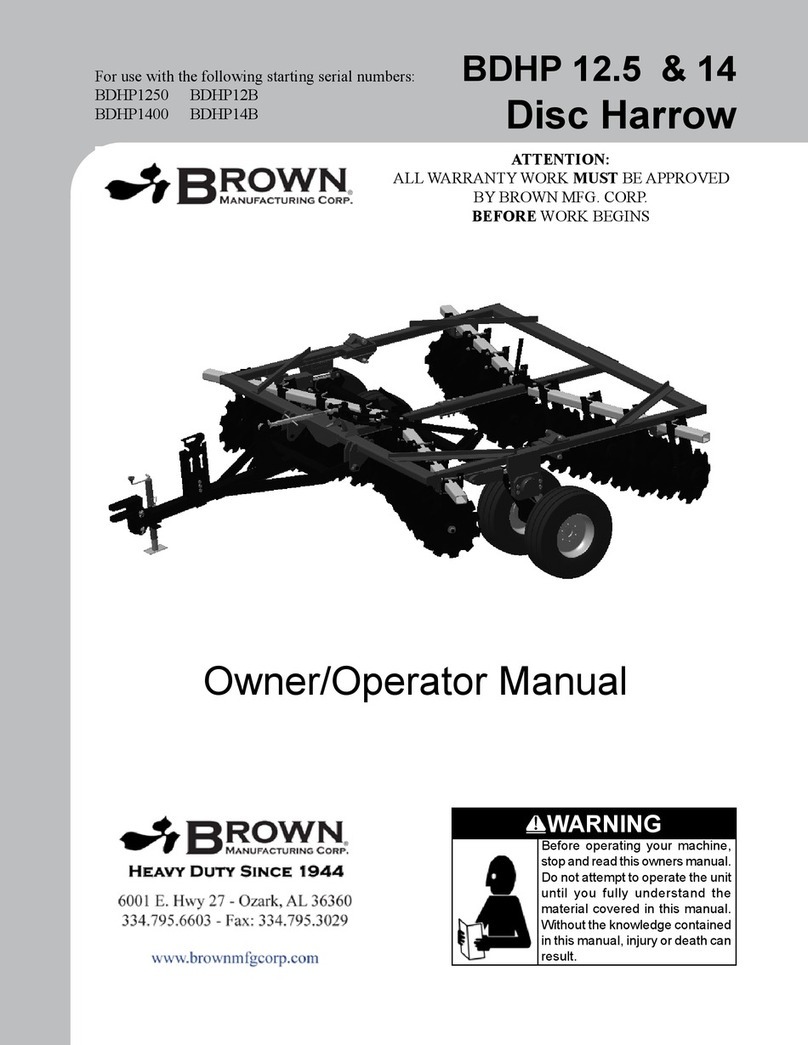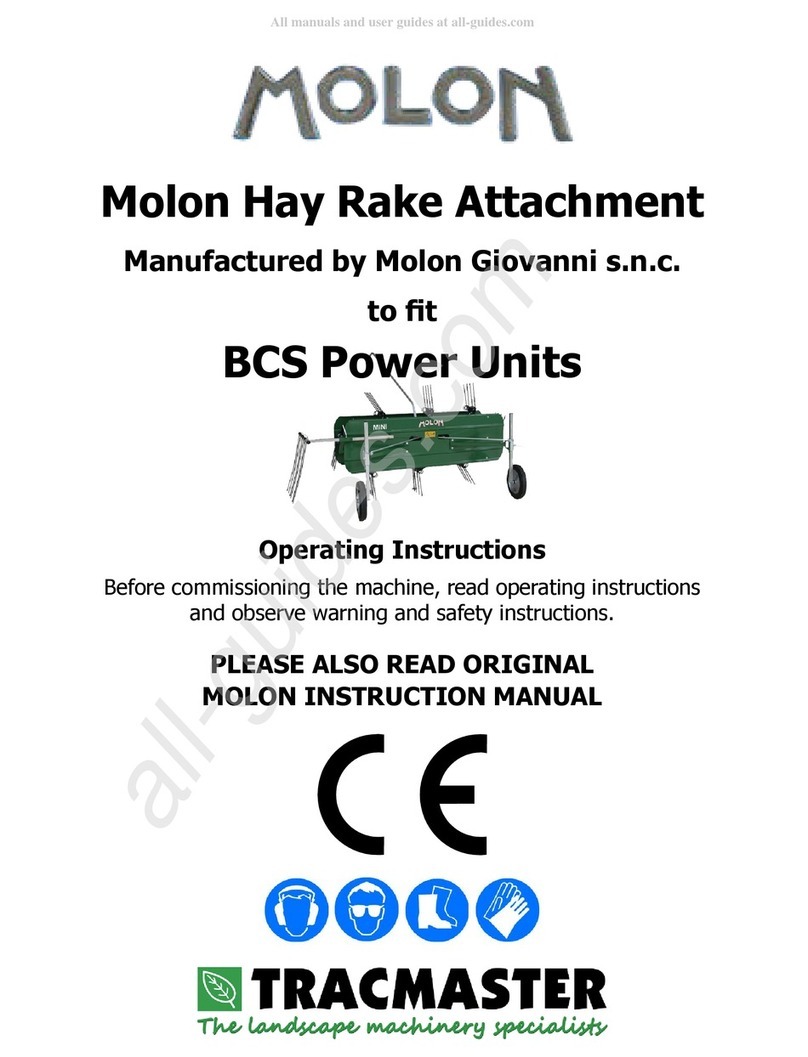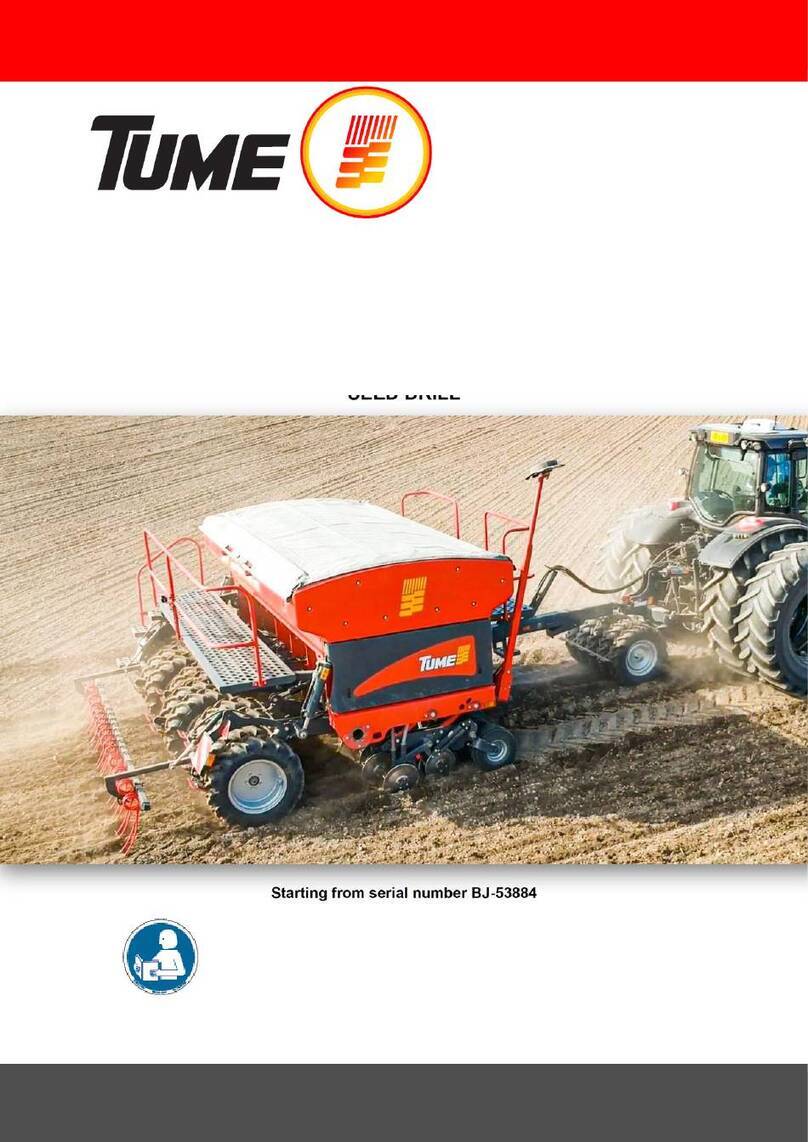
4
Selecting the fertilizer
Tume Nova Combi uses the same coulter for spreading both the fertilizer and seeds, although in most
conditions they are placed slightly separately from each other. Fertilizers placed near the seeds can in
some conditions slow or prevent germination. Fine seeds (such as turnip rape or oilseed rape) and
skinless seeds (such as wheat) are most susceptible to such burn damages. Burn damages are currently
under research, but as there are no results yet, it is best to use traditional granular fertilizers from well
known manufacturers, with grains containing all the nutrients provided by the fertilizer. Fast soluble
nitrogen fertilizers (such as urea) should be avoided. There are no research results from using
mechanical fertilizer compounds.
They should be portioned moderately. Avoid high levels of fertilizing, or alternatively apply a divided
method, in which part of the fertilizers are applied to new growth.
General instructions for direct seeding
Applying direct seeding and omitting all soil tillage operations can result in great savings and enable
cultivation of large areas with limited machinery and personnel. In favorable conditions and particularly
with winter-grain, the yield under zero tillage is normal. In spring seeding zero tillage may result in slightly
lesser average yield compared to traditional methods.
It is recommendable to take the change to direct seeding into consideration already in the previous year,
at the latest. The field should be properly ditched, and no packed grooves made by wheels or other such
roughness should be found on the surface. Try not to stop the combine while threshing in order to avoid
forming heaps of straw in the field. The combine should have an efficient chuff cutter so that leftovers are
spread on top of the soil in as even a layer as possible. The stubble height should be less than 20 cm.
Direct seeding is best suited for autumn seeding, because in autumn the soil normally contains plenty of
moisture, which facilitates germination. Spring seeding season is often dry, and so is early summer. The
significance of the correct seeding time, soil structure, and soil type are emphasized when direct seeding
is applied to spring seeding. It is also essential to ensure the correct seeding depth and cover the seeds
properly. It is of utmost importance to make sure that the seeds will not remain visible on top of the soil!
Tume Nova Combi can be equipped with an covering disc in order to ensure that the seeds are properly
covered.
Weed control is of essential significance when direct seeding is applied. Practice has shown that annual
Glyfosate spraying in smaller dosages prior to germination either immediately before or after seeding
keeps couch grass fairly well in control. Other weeds, such as weeds grasses can, however, thrive along
the years. These should be controlled by using available chemicals, and if necessary, by applying rotation
of crops or fallowing. Fairly light soils with ideal humidity for direct seeding suffer most from weeds.
When applying direct seeding, crops should also be observed more carefully than usually in case of
diseases and pests. Control measures should be taken without delay when control thresholds are
exceeded.
Seeding into minimally tilled soil
Tume Nova Combi is extremely suitable for seeding into minimally tilled soil. Equipment that produces an
even, suitably fine, and compact soil, and which enables a sufficiently accurate working depth adjustment
should be used for minimal tilling.
Minimal tilling that takes place immediately before seeding should be extended slightly deeper than the
seeding depth, particularly in clayey soil. This ensures that suitable humidity remains in the seeding
depth.
For spring seeding it is recommendable to apply the following minimal tillage method: tilling is carried out
in 10-12 cm depth in autumn, which mixes the vegetable waste into soil surface layer, instead of letting it
form an insulating layer over the soil surface. This method enables seeding at the normal time in spring,
which is particularly important in countries with a short growth period. Tume Nova Combi enables direct
spring seeding into soil that has been lightly tilled in autumn. Light surface tilling can be carried out in
connection with seeding by connecting a Tume Cultipack rear harrow to the machine.
Seeding into normally tilled soil
Seedbed preparation should be performed by tilling the soil deeper than the seeding depth, particularly in
clayey soil. This helps maintain better humidity conditions in the seeding depth.
Coulters should be lightly pressured particularly when tilling light soil.
